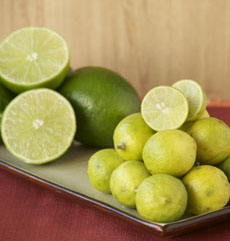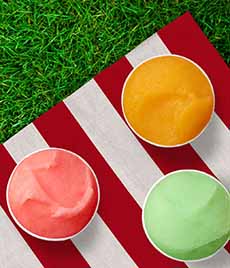Papaya Shave Ice Recipe & Why It’s Shave Ice, Not Shaved Ice
|
|
Before the end of National Papaya Month (June), we wanted to share a recipe that may motivate you to buy one: Papaya Shave Ice. It’s made in a blender with ice cubes. In addition to the shave ice, there are more papaya recipes below. Snow cones made from snow and shaved ice are the oldest form of ice cream—if you substitute a bowl or cup for the cylindrical cone, which came much later. The original “ice cream,” made in China some 4,000 years ago, consisted of flavoring snow with syrup (the history of ice cream). Records indicate that a shaved ice dessert called kakigori was served in 11th-century Japan. It was made from ice harvested in winter and stored in ice houses: a luxury available only to the nobility and the wealthy. Fast forward to the 19th century: With the ice-making technology of the Industrial Revolution, kakigori was finally affordable to the general public in Japan. The first kakigori shop was opened in 1872. The ice was flavored with fruit syrup and optionally topped with adzuki beans and sweetened condensed milk. The concept spread around the world: ice shaved from large blocks into a paper cone or cup, topped with syrup, became street-food fare. In the U.S., it took the shape of a snow cone. Modern versions of Japanese shaved ice became very popular in the 50th state, and Hawaiian shave ice evolved to offer dozens of flavors (including some neon colors) and toppings galore. The toppings went way beyond adzuki beans and sweetened condensed milk, to: Chocolate chips, coconut flakes (plain and toasted), coconut milk, corn, dried cereal, evaporated milk, fruits, gelatin, gummy bears, Kool-Aid powder, marshmallow cream, matcha powder, mini rice cakes, mochi balls, Nutella, nuts, and seeds, Oreos, peanut butter, pickles, sprinkles, tapioca pearls. Oh…and some whipped cream, if you’d like it [source and source]. Not enough for you? In Hawaii, a scoop of ice cream is often placed at the bottom of the bowl. As to why Hawaiians call it shave ice instead of shaved ice: The recipe was brought by Japanese immigrants to Hawaii. They shaved flakes off large blocks of ice, then topped them with sugar or fruit juice. In their Pidgin vernacular, the icy treat became known as shave ice, not shaved ice [source]. Thanks to Melissa’s Chef Tom Fraker for this recipe. Chef Tom used the strawberry papaya variety, so-called because of its salmon-red to pink flesh. The strawberry papaya is considered to be the sweetest and most flavorful of the papaya varieties. But if you can’t find it, substitute any other papaya. You can order strawberry papayas directly from Melissa’s. Papayas are ripe when they are soft, like a ripe peach. Ingredients 1. MAKE the simple syrup. Take equal parts of granulated sugar and water (e.g., 1 cup sugar and 1 cup water) and place them in a saucepan. Bring just to a boil, remove from the heat and let cool. You can use the remainder to sweeten cold (or hot) drinks. It dissolves without any effort. 2. MAKE the ice balls. Place enough ice in a blender to create your desired amount of shave ice balls. Blend the ice cubes until they form light and airy shavings. With your hands, form into as many shave ice balls as you would like. Place them in the freezer until you are ready to use them. 3. MAKE the topping. In a blender, add the papaya, lime zest, and juice. Blend until smooth and then strain the mixture into a bowl through a fine mesh sieve. Stir in the simple syrup. This makes about 1-1/4 cup shave ice syrup. 4. ASSEMBLE: Place the shave ice balls in your desired vessels, drizzle with the syrup and serve. You can use bowls, rocks glasses, wine glasses, Margarita glasses, Martini glasses—whatever you have. What’s the difference between snow cones (photo #6) and shave ice? Note that you can easily substitute papaya for mango in most recipes. |
|
|
|
||






